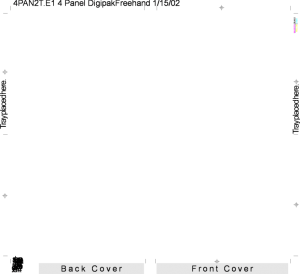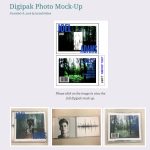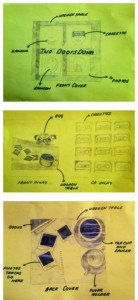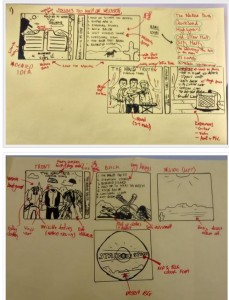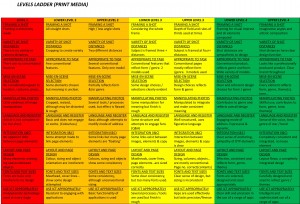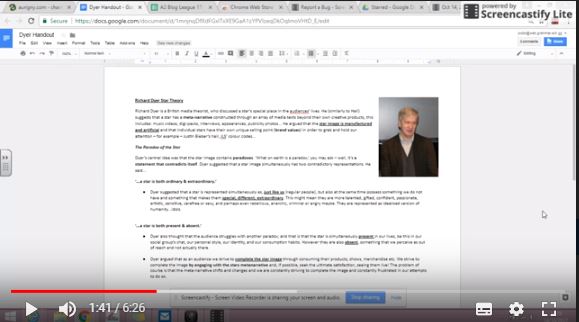‘In what ways does your media product use, develop or challenge forms and conventions of real media products?’
This evaluation question must be done individually!
Task
- A collage of nine images from three professional music videos of the same genre (to include your own performer if possible) + brief explanation of how that example is conventional compared with nine images from your own video: comparing it with the conventional features identified from the professional texts.
- Images should illustrate the convention of the genre and the form (technical conventions) i.e. urban feel, breaking the 4th wall, close up on performance, generically typical themes, expressionist visual style…
- A comparative collage of print materials (DP and Advert); using call outs (text boxes & arrows) identifying conventional design and generic features and including an explanation on how these features were used (or not) in your own texts.
Help
Video Collages
In your collage of conventions and forms from music videos. You could consider some of the following conventional features to use in your analysis of the professional texts and then your own:
- images that shows a link between themes in the music and how they are amplified / illustrated in the visuals
- images that represent a generically (un)conventional star image
- images that represent your artist as ordinary / extraordinary
- images that demonstrates conventional use of camera
- images that demonstrates conventional use of lighting / colour
- images that demonstrates generic mise-en-scene
- images that show an (un)conventional use of narrative
- images that show you’ve drawn inspiration from other music videos & media texts
- (words in bold italics could form some of your sub headings for analysis and comments)
- FORMS – those technical conventions of lip syncing, editing to the beat, repeatability, narrative/performance ratio/ type of narrative
Number the images in the collage and then beneath or between write a brief (1-2 sentences) comment explaining what the conventional features are:
You should use at least three professional videos to draw examples from:
This is one layout with a separate commentary but is more complicated to navigate.
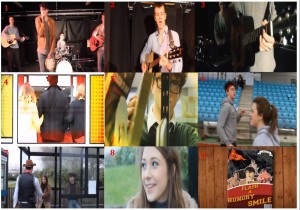
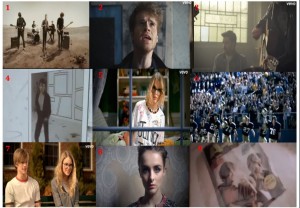
This layout is easier for the examiner to read.
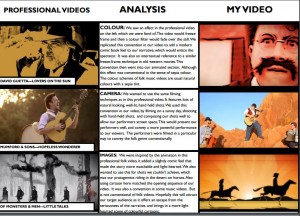
This is an alternative version done in slides:
Digi-Pack:
Refer to your analysis of the conventions of a digipak and advert as research for this section.
In your collage of the digipack and poster you should consider the following generic & design conventions for the FRONT and BACK covers:
- how do the images scheme reflect the genre of music?
- rules of composition
- filters / images adjustment
- colour scheme
- design of mise-en-scene / art work
- how is the layout / DTP conventional for digipacks and adverts?
- typeface selection & size
- designed elements
- type size
- spacing
- relationship between image and copy
- Forms: those general technical conventions i.e. tracks, publisher, copywrite, album name, performer name, image, advert image from DP.
You should use a digipack and poster from the same album and same performer or similar one of the same genre, and draw out the relationships between the two products:
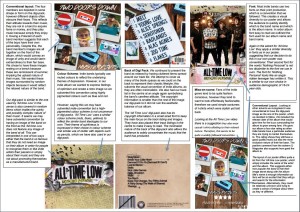
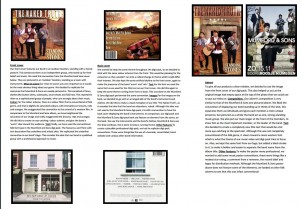
Top Tips & More Help
Here is a link to a document on conventions broadly and some conventional features of some genres.
Aim to include as much terminology as possible and some theorists, where applicable.
TERMS
Some of the concept / micro terms you should include…remember to use the terms related to Genre:
…conventional, generic, typical, usual, frequent, unusual, subvert, unconventional, challenged, used, applied, developed, manipulated, exaggerated, amplified, increased, augmented, + repertoire of elements, genre, blueprint, contract, ingredients, star image, audience expectations, paradox of the star, ordinary, extraordinary, semic codes, cultural codes, symbolic codes, mise-en-scene, camera, lighting, font, integration of copy and images, shot distances, composition, editing, camera movement, narrative structure, disjunctive/amplified narratives, character types…
You should also regularly use ‘analysis words’ such as…
…represents, implies, suggests, connotes, reflects, signifies, emphasises, highlights, underlines, illustrates, shows, contributes to…
And always have…
…apply, develop, challenge or synonyms such as extend, subvert, amplify, exaggerate, increase, improve, extend, copy, contrast, contradict…
Revisit your concepts and theorists (particularly ‘Altman’ but also ‘Hall’ , ‘Barthes’ and ‘Dyer’ for more buzz words and read their handouts for ideas.
Remember to answer the question on every example. So, how was this an example of the convention? A development of convention? A deliberate subversion / rejection of the convention?
Brainstorming Task
What is conventional about your music video as a form of media? And what isn’t? What did you ‘use, develop, challenge?’
What is conventional about your genre of music video? And what isn’t? What did you ‘use, develop, challenge?’





